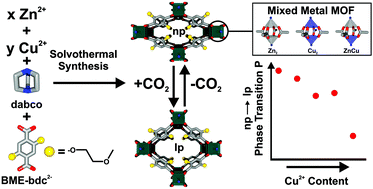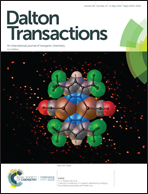Flexibility control in alkyl ether-functionalized pillared-layered MOFs by a Cu/Zn mixed metal approach†
Abstract
Flexible metal–organic frameworks (MOFs) exhibit large potential as next-generation materials in areas such as gas sensing, gas separation and mechanical damping. By using a mixed metal approach, we report how the stimuli reponsive phase transition of flexible pillared-layered MOFs can be tuned over a wide range. Different Cu2+ to Zn2+ metal ratios are incorporated into the materials by using a simple solvothermal approach. The properties of the obtained materials are probed by differential scanning calorimetry and CO2 sorption measurements, revealing stimuli responsive behaviour as a function of metal ratio. Pair distribution functions derived from X-ray total scattering experiments suggest a distortion of the M2 paddlewheel as a function of the Cu content. We rationalize these phenomena by the different distortion energies of Cu2+ and Zn2+ ions to deviate from the square pyramidal structure of the relaxed paddlewheel node. Our work follows on from the large interest in tuning and understanding the materials properties of flexible MOFs, highlighting the large number of parameters that can be used for the targeted manipulation and design of properties of these fascinating materials.



 Please wait while we load your content...
Please wait while we load your content...